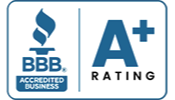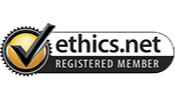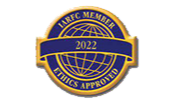The latest Federal Open Market Committee (FOMC) meeting delivered the Fed’s first quarter-point move in a direction many markets had been expecting: the Committee lowered the target range for the federal funds rate by 25 basis points to 4.00%–4.25%.
The decision, and the supporting materials released alongside it, reflected a shift in the Fed’s assessment of the U.S. outlook: growth is moderating, job gains have slowed, unemployment has edged up (though it remains low), and inflation has moved up and remains “somewhat elevated.” The Fed framed the cut as a response to a changed balance of risks, while emphasizing data dependence going forward.
Below, we unpack what happened, why it happened, how markets reacted, and most importantly for investors, what practical steps you should consider now.
The Headline: A 25 BPS Cut, But Not a Pivot to Easy Policy
At the last meeting, the FOMC reduced the federal funds target range by 25 basis points to 4.00%–4.25%, and the Board also lowered the interest rate paid on reserve balances to 4.15%. The implementation note included operational details for open-market operations and standing repo/reverse repo parameters, signaling the Fed wants a smooth operational transition while keeping tools in place.
Importantly, the statement was careful: the Committee said it “decided to lower the target range… in light of the shift in the balance of risks,” and that it will “carefully assess incoming data, the evolving outlook, and the balance of risks” before making further adjustments. That language is another reminder that the Fed is data-dependent, not pre-committed to a specific path of cuts.
One dissenter (Stephen Miran) preferred a larger cut (50 bps). The split vote highlights that while the Committee moved, views inside the Fed on the pace and size of easing still vary.
Why the Fed Cut: Growth Eased, Jobs Softened, Inflation Persistent
The Fed explicitly pointed to three dynamics that shaped its decision:
- Slowing activity / softer labor market: Recent indicators showed growth moderating, job gains slowing, and the unemployment rate edging higher, evidence that downside risks to employment had increased.
- Inflation remains above goal: The Fed noted inflation “has moved up and remains somewhat elevated.” That phrasing signals the inflation battle isn’t fully won; inflation still matters to policy decisions.
- Balance of risks shifted: Combining softer labor markets with still-elevated inflation changed the Committee’s assessment of risks. The Fed judged the balance had shifted enough to warrant a modest easing to support employment without abdicating its inflation goal.
Fed Chair Jerome Powell reinforced this message in public remarks after the meeting: the Fed moved because the balance of risks changed, but the Committee remains highly attentive to inflation and will adjust policy if risks to its dual mandate re-emerge. In short, a cautious, conditional cut.
What the Summary of Economic Projections (SEP) Tells Us

Disclaimer: This material is for educational purposes only and does not constitute individualized financial, legal, or tax advice. Consult your professional fiduciary advisors about your specific situation and state-specific rules.
The Fed publishes participants’ economic projections with meetings that include a SEP. The latest projections are especially instructive because they reveal how policymakers see the path for growth, unemployment, inflation, and the appropriate federal funds rate over the coming years.
- Median forecasts show a slower growth profile for 2025 (real GDP growth projections around the mid-1% range) and a modestly higher unemployment rate in 2025 than earlier expected.
- Projected inflation (PCE) for 2025 is materially above 2% in the median (PCE around 3.0% in 2025 in the SEP), with gradual easing over 2026–2027 toward 2%. That helps explain why the Fed isn’t ready to cut aggressively.
- The “appropriate policy path” implied by participants is lower than current policy at the end of the year: the SEP medians suggest participants expect the midpoint of the appropriate federal funds rate to be lower than where the Fed set it immediately after the cut; indicating the Fed (and many participants) anticipate further gradual easing over the coming quarters, conditional on data.
Put simply: the Fed cut this meeting, but participants expect a multi-step glide down later in the forecast horizon – not an immediate return to pre-tightening rates.
Market and Real-Economy Reactions (Quick Summary)

Markets saw the cut and the Fed’s cautious posture as confirmation that the easing cycle has started but won’t be precipitous. A few observable reactions:
- Mortgage and lending rates:Mortgage rates moved lower as traders priced in cuts, but mortgage rates remain tied to longer-term Treasury yields and re-priced a bit after the meeting. In short, mortgage rates declined from recent highs but are still above the multi-year lows seen earlier in the year. That nuance matters for homeowners considering refinancing.
- Equities and risk assets:Equities often rally on easing, but the Fed’s caution and the still-elevated inflation outlook kept rallies measured. News coverage emphasized the Fed’s “careful” language rather than an aggressive shift.
- Market expectations for future cuts:The SEP plus Fed language pushed markets to price in several gradual cuts over the next 12–18 months, not a rapid cascade. Analysts and commentators differ on the number and timing of those cuts, reflecting the same internal Fed debate we saw in the vote split.
What This Means for Different Financial Priorities
Below are straightforward implications for common concerns – investments, borrowing, and planning.
For Investors: Reposition Thoughtfully, Avoid Overreacting
- Fixed income: The Fed’s cut already reduced short-term yields; however, the SEP’s expectation of gradual easing and still-elevated inflation suggests term premium and inflation expectations will continue to drive long yields. For those with bond allocations, consider a barbell or laddered approach to capture current yields while keeping duration manageable. A ladder can help reduce reinvestment risk if rates fall further, while a short-to-intermediate allocation cushions price sensitivity.
- Equities: Lower policy rates tend to be supportive for equities, but the Fed’s caution implies growth remains uneven. Consider maintaining diversified equity exposures and rebalancing to lock in gains and help manage risk rather than chasing short-term rallies.
- Inflation protection: Because the Fed explicitly acknowledged inflation remains above target, allocations to inflation hedges (TIPS, real assets) remain prudent for investors with multi-year horizons.
For Homeowners and Prospective Buyers: Evaluate Refinancing and Mortgage Timing
- Refinancing: If you have a mortgage with a rate materially above current market options, a refinance can still make sense, but shop carefully. Mortgage rates follow the 10-year Treasury and can move independently of the Fed’s short-term policy moves. Getting multiple lender quotes and locking when a clear economic case exists is recommended.
- Homebuyers: Lower short-term rates can ease some borrowing costs, but the most important driver of mortgage rates remains long-term yields. If you’re house-hunting, focus on affordability and lock strategies rather than assuming a rapid fall in rates.
For Savers and Cash Management: Yields On Short Cash Have Improved, But May Fall
- High-quality cash and short-term instruments (MMFs, short treasuries) still offer attractive yields relative to historic norms. The Fed has lowered the top of the target range, and deposit rates may follow. If you rely on cash income, ladder short-term CDs, or consider short-duration bond funds, but be mindful that yields may drift lower if further cuts occur.
For Business Owners and Borrowers: Plan for Modest Easing But Keep Contingency Plans
- Expect modest relief in borrowing costs over time, but don’t bank on a flood of cheap credit. If you’re financing capital projects, consider negotiating terms now and include covenants that allow flexibility if rates move more or less than expected.
Actions to Consider
- Review your liquidity ladder: If you rely on short-term cash returns, check CD and MMF maturities and plan reinvestments to avoid locking in at an inopportune time. Consider staggering maturities over the next 6–18 months.
- Re-assess mortgage decisions with a rate quote, not headlines: Get 2–3 lender quotes if refinancing is on your radar. Use forward-rate observations (10-yr T-note) and lender lock windows to decide whether to lock.
- Don’t change your long-term asset allocation on headline moves: The Fed’s action is meaningful but incremental; rebalancing to long-term targets and harvesting tax losses/gains remains a sound approach.
- Evaluate inflation exposure: If your portfolio has little inflation hedging (TIPS, commodities, real estate exposure), now is a moment to decide whether to add modest protection given the SEP’s above-target inflation forecast.
- If you’re near retirement, run a cash-flow stress test: Test how a sequence of modest cuts (and the economic slowdown the Fed is responding to) would affect withdrawal rates, required income, and portfolio longevity.
Our Recommendations
At Agemy Financial Strategies, we believe in measured responses that reflect both the Fed’s cut and its caution:
- Conservative income clients: Maintain laddered short-term instruments to help capture current yields; avoid extending duration aggressively just to chase slightly higher prices if rates drop further.
- Growth clients: Use any market volatility to rebalance, the Fed’s move supports risk assets in the medium term, but the economic slowdown and inflation dynamics mean selectivity matters.
- Borrowers and homeowners: If a refinance saves materially after fees, act. If the savings are marginal, prioritize flexibility (shorter lock, no prepayment penalties).
- Clients with near-term liabilities: Keep a larger cash buffer. The SEP shows some uncertainty ahead; cash gives optionality.
We’ll continue reviewing portfolios with these principles: preserve capital, harvest opportunities created by market repricings, and maintain flexibility given the Fed’s data-dependent approach.
The Path Forward: What to Watch Next
Three things matter most for the Fed’s future moves, and for your finances:
- Inflation readings (especially PCE and core PCE): If inflation retreats toward 2% consistently, the Fed will have room for more cuts. If inflation reaccelerates, cuts could stall.
- Labor market indicators (payrolls, unemployment, wage growth): The Fed noted that downside risks to employment have risen. Continued softening could lead to more easing; resilience could keep policy tighter for longer.
- Financial conditions / market signals: Credit spreads, long-term yields, and consumer sentiment will influence how fast or slow the Fed moves.
Expect the Fed to remain data-driven and cautious: the committee signaled a modest start to easing, but the timeline and scale depend on incoming data and how inflation responds.
Final Thoughts: Plan, Don’t Panic

The latest FOMC meeting marks the beginning of an easing cycle, but a careful one. For investors, that means the environment is shifting in a way that may offer opportunities (refinancing, modest equity upside) while still requiring prudence (inflation not yet tamed, growth decelerating).
At Agemy Financial Strategies, our emphasis is straightforward: use this window to review your plan, lock in clear wins (like a strong refinance), maintain portfolio diversification, and keep cash/liquidity aligned with your near-term needs.
If you’d like, we can run a personalized review based on your portfolio, mortgage terms, or cash needs and lay out specific options for the scenarios the Fed outlined in the SEP.
Contact us today at agemy.com.
Investment advisory services are offered through Agemy Wealth Advisors, LLC, a Registered Investment Advisor and fiduciary to its clients. Agemy Financial Strategies, Inc. is a franchisee of Retirement Income Source®, LLC. Agemy Financial Strategies, Inc. and Agemy Wealth Advisors, LLC are associated entities. Agemy Financial Strategies, Inc. and Agemy Wealth Advisors, LLC entities are not associated with Retirement Income Source®, LLC
The information contained in this e-mail is intended for the exclusive use of the addressee(s) and may contain confidential or privileged information. Any review, reliance or distribution by others or forwarding without the express permission of the sender is strictly prohibited. If you are not the intended recipient, please contact the sender and delete all copies. To the extent permitted by law, Agemy Financial Strategies, Inc and Agemy Wealth Advisors, LLC, and Retirement Income Source, LLC do not accept any liability arising from the use or retransmission of the information in this e-mail.












